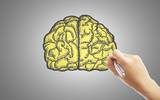How do our memories store information? Why is it that we can recall a memory at will from decades ago, and what purpose does forgetting information serve?
The human memory has been the subject of investigation among many 20th Century psychologists and remains an active area of study for today’s cognitive scientists. Below we take a look at some of the most influential studies, experiments and theories that continue to guide our understanding of the function of memory.
1Multi-Store Model
(Atkinson & Shiffrin, 1968)
An influential theory of memory known as the multi-store model was proposed by Richard Atkinson and Richard Shiffrin in 1968. This model suggested that information exists in one of 3 states of memory: the sensory, short-term and long-term stores. Information passes from one stage to the next the more we rehearse it in our minds, but can fade away if we do not pay enough attention to it.Read More
Information enters the memory from the senses - for instance, the eyes observe a picture, olfactory receptors in the nose might smell coffee or we might hear a piece of music. This stream of information is held in the sensory memory store, and because it consists of a huge amount of data describing our surroundings, we only need to remember a small portion of it. As a result, most sensory information ‘decays’ and is forgotten after a short period of time. A sight or sound that we might find interesting captures our attention, and our contemplation of this information - known as rehearsal - leads to the data being promoted to the short-term memory store, where it will be held for a few hours or even days in case we need access to it.
The short-term memory gives us access to information that is salient to our current situation, but is limited in its capacity.
Therefore, we need to further rehearse information in the short-term memory to remember it for longer. This may involve merely recalling and thinking about a past event, or remembering a fact by rote - by thinking or writing about it repeatedly. Rehearsal then further promotes this significant information to the long-term memory store, where Atkinson and Shiffrin believed that it could survive for years, decades or even a lifetime.
Key information regarding people that we have met, important life events and other important facts makes it through the sensory and short-term memory stores to reach the long-term memory.
Learn more about Atkinson and Shiffrin’s Multi-Store Model

2Levels of Processing
(Craik & Lockhart, 1972)
Fergus Craik and Robert Lockhart were critical of explanation for memory provided by the multi-store model, so in 1972 they proposed an alternative explanation known as the levels of processing effect. According to this model, memories do not reside in 3 stores; instead, the strength of a memory trace depends upon the quality of processing, or rehearsal, of a stimulus. In other words, the more we think about something, the more long-lasting the memory we have of it (Craik & Lockhart, 1972).Read More
Craik and Lockhart distinguished between two types of processing that take place when we make an observation: shallow and deep processing. Shallow processing - considering the overall appearance or sound of something - generally leads to a stimuli being forgotten. This explains why we may walk past many people in the street on a morning commute, but not remember a single face by lunch time.
Deep (or semantic) processing, on the other hand, involves elaborative rehearsal - focusing on a stimulus in a more considered way, such as thinking about the meaning of a word or the consequences of an event. For example, merely reading a news story involves shallow processing, but thinking about the repercussions of the story - how it will affect people - requires deep processing, which increases the likelihood of details of the story being memorized.
In 1975, Craik and another psychologist, Endel Tulving, published the findings of an experiment which sought to test the levels of processing effect.
Participants were shown a list of 60 words, which they then answered a question about which required either shallow processing or more elaborative rehearsal. When the original words were placed amongst a longer list of words, participants who had conducted deeper processing of words and their meanings were able to pick them out more efficiently than those who had processed the mere appearance or sound of words (Craik & Tulving, 1975).
Learn more about Levels of Processing here

3Working Memory Model
(Baddeley & Hitch, 1974)
Whilst the Multi-Store Model (see above) provided a compelling insight into how sensory information is filtered and made available for recall according to its importance to us, Alan Baddeley and Graham Hitch viewed the short-term memory (STM) store as being over-simplistic and proposed a working memory model (Baddeley & Hitch, 1974), which replace the STM.
The working memory model proposed 2 components - a visuo-spatial sketchpad (the ‘inner eye’) and an articulatory-phonological loop (the ‘inner ear’), which focus on a different types of sensory information. Both work independently of one another, but are regulated by a central executive, which collects and processes information from the other components similarly to how a computer processor handles data held separately on a hard disk.Read More
According to Baddeley and Hitch, the visuo-spatial sketchpad handles visual data - our observations of our surroundings - and spatial information - our understanding of objects’ size and location in our environment and their position in relation to ourselves. This enables us to interact with objects: to pick up a drink or avoid walking into a door, for example.
The visuo-spatial sketchpad also enables a person to recall and consider visual information stored in the long-term memory. When you try to recall a friend’s face, your ability to visualize their appearance involves the visuo-spatial sketchpad.
The articulatory-phonological loop handles the sounds and voices that we hear. Auditory memory traces are normally forgotten but may be rehearsed using the ‘inner voice’; a process which can strengthen our memory of a particular sound.
Learn more about Baddeley and Hitch’s working memory model here

4Miller’s Magic Number
(Miller, 1956)
Prior to the working memory model, U.S. cognitive psychologist George A. Miller questioned the limits of the short-term memory’s capacity. In a renowned 1956 paper published in the journal Psychological Review, Miller cited the results of previous memory experiments, concluding that people tend only to be able to hold, on average, 7 chunks of information (plus or minus two) in the short-term memory before needing to further process them for longer storage. For instance, most people would be able to remember a 7-digit phone number but would struggle to remember a 10-digit number. This led to Miller describing the number 7 +/- 2 as a “magical” number in our understanding of memory.Read More
But why are we able to remember the whole sentence that a friend has just uttered, when it consists of dozens of individual chunks in the form of letters? With a background in linguistics, having studied speech at the University of Alabama, Miller understood that the brain was able to ‘chunk’ items of information together and that these chunks counted towards the 7-chunk limit of the STM. A long word, for example, consists of many letters, which in turn form numerous phonemes. Instead of only being able to remember a 7-letter word, the mind “recodes” it, chunking the individual items of data together. This process allows us to boost the limits of recollection to a list of 7 separate words.
Miller’s understanding of the limits of human memory applies to both the short-term store in the multi-store model and Baddeley and Hitch’s working memory. Only through sustained effort of rehearsing information are we able to memorize data for longer than a short period of time.
Read more about Miller’s Magic Number here

5Memory Decay
(Peterson and Peterson, 1959)
Following Miller’s ‘magic number’ paper regarding the capacity of the short-term memory, Peterson and Peterson set out to measure memories’ longevity - how long will a memory last without being rehearsed before it is forgotten completely?
In an experiment employing a Brown-Peterson task, participants were given a list of trigrams - meaningless lists of 3 letters (e.g. GRT, PXM, RBZ) - to remember. After the trigrams had been shown, participants were asked to count down from a number, and to recall the trigrams at various periods after remembering them.Read More
The use of such trigrams makes it impracticable for participants to assign meaning to the data to help encode them more easily, while the interference task prevented rehearsal, enabling the researchers to measure the duration of short-term memories more accurately.
Whilst almost all participants were initially able to recall the trigrams, after 18 seconds recall accuracy fell to around just 10%. Peterson and Peterson’s study demonstrated the surprising brevity of memories in the short-term store, before decay affects our ability to recall them.
Learn more about memory decay here

6Flashbulb Memories
(Brown & Kulik, 1977)
There are particular moments in living history that vast numbers of people seem to hold vivid recollections of. You will likely be able to recall such an event that you hold unusually detailed memories of yourself. When many people learned that JFK, Elvis Presley or Princess Diana died, or they heard of the terrorist attacks taking place in New York City in 2001, a detailed memory seems to have formed of what they were doing at the particular moment that they heard such news.
Psychologists Roger Brown and James Kulik recognized this memory phenomenon as early as 1977, when they published a paper describing flashbulb memories - vivid and highly detailed snapshots created often (but not necessarily) at times of shock or trauma.Read More
We are able to recall minute details of our personal circumstances whilst engaging in otherwise mundane activities when we learnt of such events. Moreover, we do not need to be personally connected to an event for it to affect us, and for it lead to the creation of a flashbulb memory.
Learn more about Flashbulb Memories here

7Memory and Smell
The link between memory and sense of smell helps many species - not just humans - to survive. The ability to remember and later recognize smells enables animals to detect the nearby presence of members of the same group, potential prey and predators. But how has this evolutionary advantage survived in modern-day humans?
Researchers at the University of North Carolina tested the olfactory effects on memory encoding and retrieval in a 1989 experiment. Male college students were shown a series of slides of pictures of females, whose attractiveness they were asked to rate on a scale. Whilst viewing the slides, the participants were exposed to pleasant odor of aftershave or an unpleasant smell. Their recollection of the faces in the slides was later tested in an environment containing either the same or a different scent.Read More
The results showed that participants were better able to recall memories when the scent at the time of encoding matched that at the time of recall (Cann and Ross, 1989). These findings suggest that a link between our sense of smell and memories remains, even if it provides less of a survival advantage than it did for our more primitive ancestors.
8Interference
Interference theory postulates that we forget memories due to other memories interfering with our recall. Interference can be either retroactive or proactive: new information can interfere with older memories (retroactive interference), whilst information we already know can affect our ability to memorize new information (proactive interference).
Both types of interference are more likely to occur when two memories are semantically related, as demonstrated in a 1960 experiment in which two groups of participants were given a list of word pairs to remember, so that they could recall the second ‘response’ word when given the first as a stimulus. A second group was also given a list to learn, but afterwards was asked to memorize a second list of word pairs. When both groups were asked to recall the words from the first list, those who had just learnt that list were able to recall more words than the group that had learnt a second list (Underwood & Postman, 1960). This supported the concept of retroactive interference: the second list impacted upon memories of words from the first list.Read More
Interference also works in the opposite direction: existing memories sometimes inhibit our ability to memorize new information. This might occur when you receive a work schedule, for instance. When you are given a new schedule a few months later, you may find yourself adhering to the original times. The schedule that you already knew interferes with your memory of the new schedule.
9False Memories
Can false memories be implanted in our minds? The idea may sound like the basis of a dystopian science fiction story, but evidence suggests that memories that we already hold can be manipulated long after their encoding. Moreover, we can even be coerced into believing invented accounts of events to be true, creating false memories that we then accept as our own.
Cognitive psychologist Elizabeth Loftus has spent much of her life researching the reliability of our memories; particularly in circumstances when their accuracy has wider consequences, such as the testimonials of eyewitness in criminal trials. Loftus found that the phrasing of questions used to extract accounts of events can lead witnesses to attest to events inaccurately.Read More
In one experiment, Loftus showed a group of participants a video of a car collision, where the vehicle was travelling at a one of a variety of speeds. She then asked them the car’s speed using a sentence whose depiction of the crash was adjusted from mild to severe using different verbs. Loftus found when the question suggested that the crash had been severe, participants disregarded their video observation and vouched that the car had been travelling faster than if the crash had been more of a gentle bump (Loftus and Palmer, 1974). The use of framed questions, as demonstrated by Loftus, can retroactively interfere with existing memories of events.
James Coan (1997) demonstrated that false memories can even be produced of entire events. He produced booklets detailing various childhood events and gave them to family members to read. The booklet given to his brother contained a false account of him being lost in a shopping mall, being found by an older man and then finding his family. When asked to recall the events, Coan’s brother believed the lost in a mall story to have actually occurred, and even embellished the account with his own details (Coan, 1997).
Read more about false memories here

10The Weapon Effect on Eyewitness Testimonies
(Johnson & Scott, 1976)
A person’s ability to memorize an event inevitably depends not just on rehearsal but also on the attention paid to it at the time it occurred. In a situation such as an bank robbery, you may have other things on your mind besides memorizing the appearance of the perpetrator. But witness’s ability to produce a testimony can sometimes be affected by whether or not a gun was involved in a crime. This phenomenon is known as the weapon effect - when a witness is involved in a situation in which a weapon is present, they have been found to remember details less accurately than a similar situation without a weapon.Read More
The weapon effect on eyewitness testimonies was the subject of a 1976 experiment in which participants situated in a waiting room watched as a man left a room carrying a pen in one hand. Another group of participants heard an aggressive argument, and then saw a man leave a room carrying a blood-stained knife.
Later, when asked to identify the man in a line-up, participants who saw the man carrying a weapon were less able to identify him than those who had seen the man carrying a pen (Johnson & Scott, 1976). Witnesses’ focus of attention had been distracted by a weapon, impeding their ability to remember other details of the event.



























